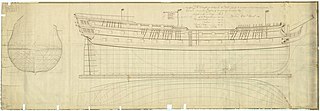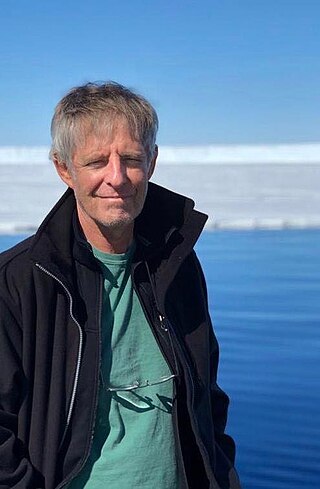Related Research Articles

Underwater archaeology is archaeology practiced underwater. As with all other branches of archaeology, it evolved from its roots in pre-history and in the classical era to include sites from the historical and industrial eras.

HMS Colossus was a 74-gun third-rate ship of the line of the Royal Navy. She was launched at Gravesend on 4 April 1787 and lost on 10 December 1798. During her years of service she participated in the Battle of Groix, the Battle of Cape St Vincent, and the Battle of the Nile. While carrying wounded from the latter, she was wrecked at the Isles of Scilly. The wreck is a Protected Wreck managed by Historic England.
The Institute of Nautical Archaeology (INA) is an organization devoted to the study of humanity's interaction with the sea through the practice of archaeology.

Association was a 90-gun second-rate ship of the line of the Royal Navy, launched at Portsmouth Dockyard in 1697. She served with distinction at the capture of Gibraltar, and was lost in 1707 by grounding on the Isles of Scilly in the greatest maritime disaster of the age. The wreck is a Protected Wreck managed by Historic England.

The Nautical Archaeology Society (NAS) is a charity registered in England and Wales and in Scotland and is a company limited by guarantee.
David Gibbins is an underwater archaeologist and a bestselling novelist.

HMS Resolution was a 70-gun third-rate ship of the line of the Royal Navy, launched at Harwich Dockyard on 6 December 1667. She was one of only three third-rate vessels designed and built by the noted maritime architect Sir Anthony Deane.

The Protection of Wrecks Act 1973 is an act of the Parliament of the United Kingdom which provides protection for designated shipwrecks.

The Protection of Military Remains Act 1986 is an Act of Parliament in the United Kingdom that provides protection for the wreckage of military aircraft and designated military vessels. The Act provides for two types of protection: protected places and controlled sites. Military aircraft are automatically protected, but vessels have to be specifically designated. The primary reason for designation is to protect as a 'war grave' the last resting place of British servicemen ; however, the Act does not require the loss of the vessel to have occurred during war.

Mensun Bound is a British maritime archaeologist born in Stanley, Falkland Islands. He is best known as director of exploration for two expeditions to the Weddell Sea which led to the rediscovery of the Endurance, in which Sir Ernest Shackleton and a crew of 27 men sailed for the Antarctic on the 1914–1917 Imperial Trans-Antarctic Expedition. The ship sank after being crushed by the ice on 21 November 1915. It was rediscovered by the Endurance22 expedition on 5 March 2022.
Cattewater Wreck is a wooden three-masted, skeleton-built vessel, one of many ships that have wrecked in Cattewater, Plymouth Sound, England. This wreck is close to the entrance of Sutton Harbour, its name is still unknown but it is believed to be from the 16th century. It is a Protected Wreck managed by Historic England.

HMS Buffalo was a storeship of the Royal Navy, originally built and launched at Sulkea, opposite Calcutta, in 1813 as the merchant vessel Hindostan. The Admiralty purchased her that year after she arrived in Britain. She later transported convicts and immigrants to Australia, before being wrecked in 1840.

George Robert Fischer was an American underwater archaeologist, considered the founding father of the field in the National Park Service. A native Californian, he did undergraduate and graduate work at Stanford University, and began his career with the National Park Service in 1959, which included assignments in six parks, the Washington, D.C. Office, and the Southeast Archaeological Center from which he retired in 1988. He began teaching courses in underwater archaeology at Florida State University in 1974 and co-instructed inter-disciplinary courses in scientific diving techniques. After retirement from the NPS his FSU activities were expanded and his assistance helped shape the university's program in underwater archaeology.
HMS Sapphire was a 32-gun fifth rate of the Royal Navy, scuttled at Bay Bulls, Newfoundland, Canada in 1696. It is currently a protected archaeological site. She was the only vessel of any size sunk in the Anglo-French wars in North America.

The Scilly naval disaster of 1707 was the loss of four warships of a Royal Navy fleet off the Isles of Scilly in severe weather on 22 October 1707. Between 1,400 and 2,000 sailors lost their lives aboard the wrecked vessels, making the incident one of the worst maritime disasters in British naval history. The disaster has been attributed to a combination of factors, including the navigators' inability to accurately calculate their positions, errors in the available charts and pilot books, and inadequate compasses.

Honor Frost was a pioneer in the field of underwater archaeology, who led many Mediterranean archaeological investigations, especially in Lebanon, and was noted for her typology of stone anchors and skills in archaeological illustration.

Innes McCartney is a British nautical archaeologist and historian. He is a Visiting Fellow at Bournemouth University in the UK.
The Society for Underwater Historical Research (SUHR) was an amateur maritime archaeology organisation operating in South Australia (SA). It was formed in 1974 by recreational scuba divers and other persons to pursue an interest in maritime archaeology and maritime history. The SUHR was renamed as the South Australian Archaeology Society in March 2012 as part of a plan to expand its activities beyond maritime archaeology to include other archaeological disciplines.
Maritime Archaeology Sea Trust (MAST) is a charitable trust founded in February 2011, which focuses on investigations into the maritime heritage of the United Kingdom and further afield, through historical and archaeological investigations. MAST uses its profits from contract work as well as donations to fund its charitable aims.
Save Ontario Shipwrecks (SOS) is a Provincial Heritage Organization in Ontario, Canada. SOS is a public charitable organization which operates through Local Chapter Committees supported by a Provincial Board of Directors and Provincial Executive.
References
- ↑ Holt P., 2007, "Research Schema". Archived from the original on 2009-01-06. Retrieved 2009-07-10. The Site Recorder Database Schema
- ↑ ACHWS, 2000, Report for the years 1999-2000, "Archived copy" (PDF). Archived from the original (PDF) on 2008-06-11. Retrieved 2008-06-11.
{{cite web}}: CS1 maint: archived copy as title (link) - ↑ NAS News "NAS news". Archived from the original on 2009-11-11. Retrieved 2009-07-10.
- ↑ Hildred A., 2009, Weapons of Warre: the Ordnance of the Mary Rose, The Mary Rose Trust, ISBN 0-9544029-3-6
- ↑ Higgins C., 2007, Learning how to map 70 tons of marble, INA Quarterly, Volume 34 No 1 Spring 2007 p11-12
- ↑ CISMAS, 2009, Firebrand Project Design, http://www.cismas.org.uk/docs/firebrand_pd_2009.pdf
- ↑ INA, 2002, "Pabuc Burnu Shipwreck - Excavation". Archived from the original on 2008-10-11. Retrieved 2009-07-10.
- ↑ Kevin Camidge, 2002, HMS Colossus survey report 2002 http://www.cismas.org.uk/docs/colossus_survey_report_2002.pdf
- ↑ Holt P., 2007, The Use of GIS in Maritime Archaeology - the Cattewater Wreck Case Study, NAS Conference 2007, Portsmouth
- ↑ ADMAT March 2009 Newsletter.pdf
- ↑ Bass G, 2006, New techniques of archaeology and Greek shipwrecks of the sixth and fifth centuries BC, Proceedings of the American Philosophical Society, Volume 150 http://www.aps-pub.com/proceedings/1501/150101.pdf
- ↑ Gesner P., 1999, Expedition Leader's Chronicle "Archived copy" (PDF). Archived from the original (PDF) on 2008-07-27. Retrieved 2009-07-10.
{{cite web}}: CS1 maint: archived copy as title (link) - ↑ Anderson R. et al, 2007, WA Museum No. 235 http://www.museum.wa.gov.au/collections/maritime/march/documents/No.%20235%20GalleHarbourAIA.pdf
- ↑ Stewart D., 2009, Stem to Stern Volume 24 http://www.ecu.edu/maritime/publications/s2s%2009.pdf